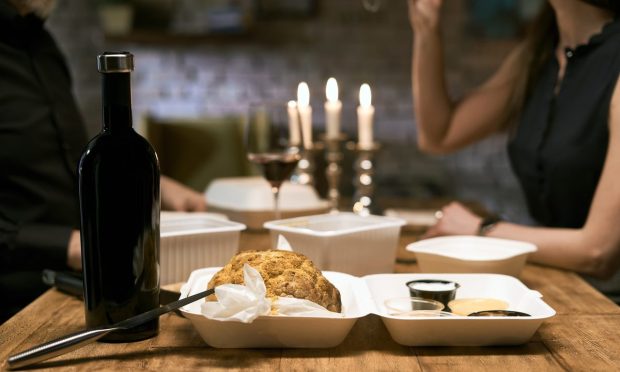Convenience Takes the Cake When People Tap Apps for Dinner

The proliferation of food delivery aggregators over the course of the pandemic has given rise to the new practice of ordering in, even if it’s not really necessary.
When anything from a fast food burger to a steak dinner can be dropped at the door in under an hour, it’s almost too easy to skip the cooking and cleanup and just relax before a ready-to-eat dinner arrives.
It’s the convenience factor — and ease of ordering — that drives 65% of those using third-party aggregators to reach for an app instead of heading to the kitchen, according to data from PYMNTS’ November edition of the Order To Eat Tracker, done in collaboration with Paytronix.
The new report takes a deep look at what nudges people to use aggregators for quick-service restaurants (QSRs) and how eateries can still maintain and strengthen customer loyalty.
Download the report: How Taco Bell Works to Keep Control of the Customer Relationship as Third-Party Aggregators Flourish
With convenience also comes fees, and therein is the issue with third-party aggregators — the expense. Fees charged to restaurants squeeze profits and those charged to consumers can make a bargain meal suddenly a bit pricey.
On average, people pay 12% more when ordering via an aggregator than if they had called the restaurant directly.
The fees aren’t stopping people from ordering altogether, with 17% of survey respondents having used an aggregator once in the past three months. The average Uber Eats user orders five times a month.
However, 53% of respondents said they opted not to use an aggregator in the past 15 months because of the added expense.
See also: Deep Dive: Why Aggregators Are Both a Saving Grace and a Sacrifice for QSRs
Restaurants operate on profit margins of 7% to 22% — and when factoring in the commissions and fees from third-party aggregators, those margins can be swallowed whole. Although there have been attempts to legislate commission caps, push back from app operators have left the issue in limbo.
To recoup a portion of the fees, some restaurants are marking up their prices on third-party aggregator apps. Chick-fil-A, for example, charged an average of 30% more for aggregator orders than for pickup orders placed on its app, while McDonald’s and Starbucks hovered around 20%.
